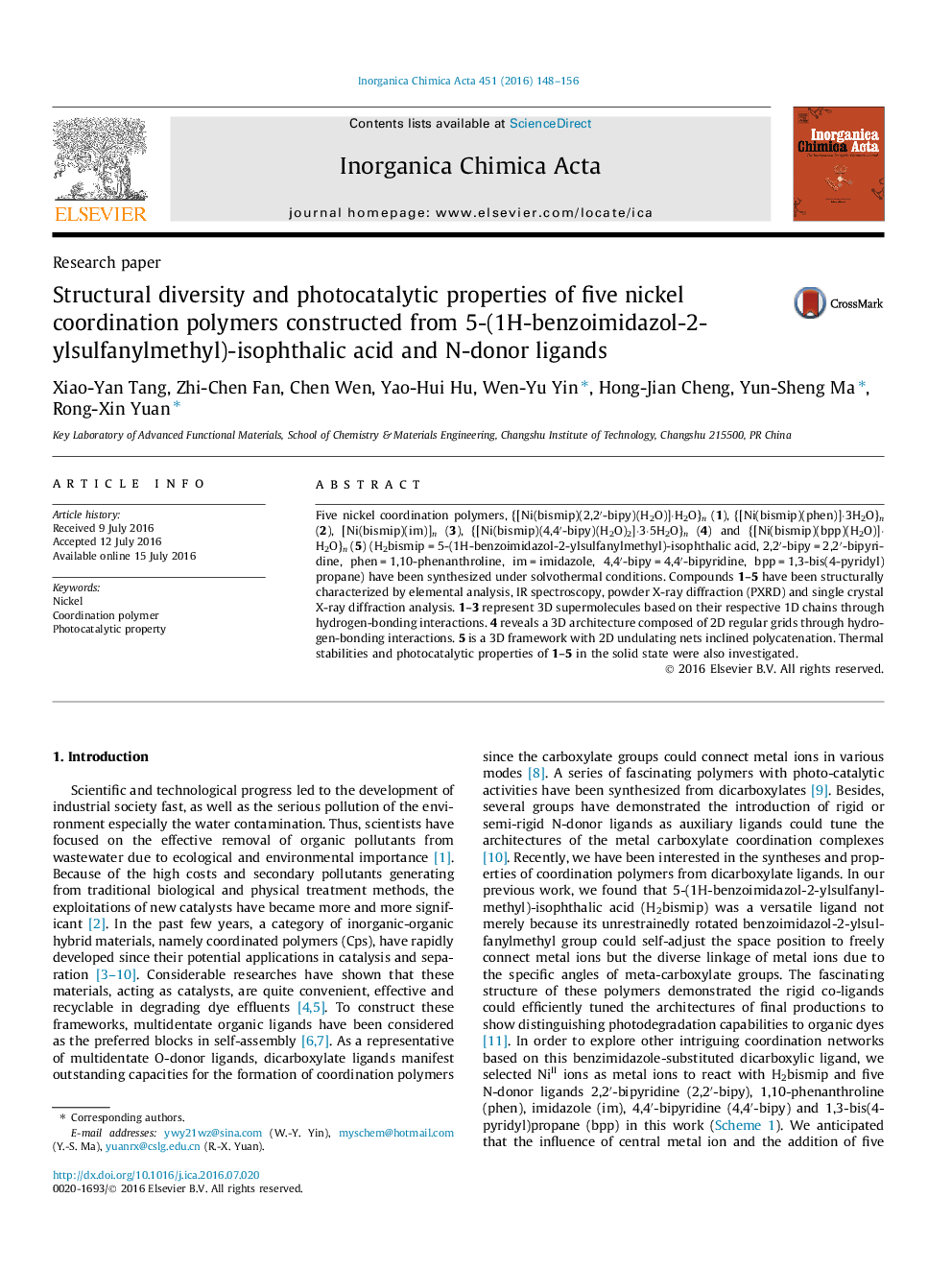| Article ID | Journal | Published Year | Pages | File Type |
|---|---|---|---|---|
| 1311937 | Inorganica Chimica Acta | 2016 | 9 Pages |
•Five new nickel coordination polymers were synthesized based on benzimidazole-substituted dicarboxylic ligand.•Compounds 1–3 show 1D chains and 4 and 5 exhibit 2D layers.•Compounds 1–5 exhibit catalytic activity of methyl blue photodegradation.
Five nickel coordination polymers, {[Ni(bismip)(2,2′-bipy)(H2O)]·H2O}n (1), {[Ni(bismip)(phen)]·3H2O}n (2), [Ni(bismip)(im)]n (3), {[Ni(bismip)(4,4′-bipy)(H2O)2]·3·5H2O}n (4) and {[Ni(bismip)(bpp)(H2O)]·H2O}n (5) (H2bismip = 5-(1H-benzoimidazol-2-ylsulfanylmethyl)-isophthalic acid, 2,2′-bipy = 2,2′-bipyridine, phen = 1,10-phenanthroline, im = imidazole, 4,4′-bipy = 4,4′-bipyridine, bpp = 1,3-bis(4-pyridyl)propane) have been synthesized under solvothermal conditions. Compounds 1–5 have been structurally characterized by elemental analysis, IR spectroscopy, powder X-ray diffraction (PXRD) and single crystal X-ray diffraction analysis. 1–3 represent 3D supermolecules based on their respective 1D chains through hydrogen-bonding interactions. 4 reveals a 3D architecture composed of 2D regular grids through hydrogen-bonding interactions. 5 is a 3D framework with 2D undulating nets inclined polycatenation. Thermal stabilities and photocatalytic properties of 1–5 in the solid state were also investigated.
Graphical abstractFive nickel coordination polymers with different architectures have been prepared from 5-(1H-benzoimidazol-2-ylsulfanylmethyl)-isophthalic acid and NiCl2 in the presence of a series of N-donor ligands. Their photocatalytic properties were also investigated.Figure optionsDownload full-size imageDownload as PowerPoint slide
